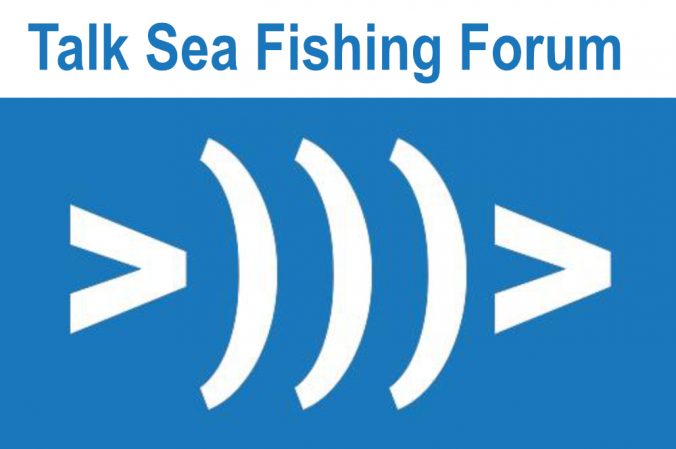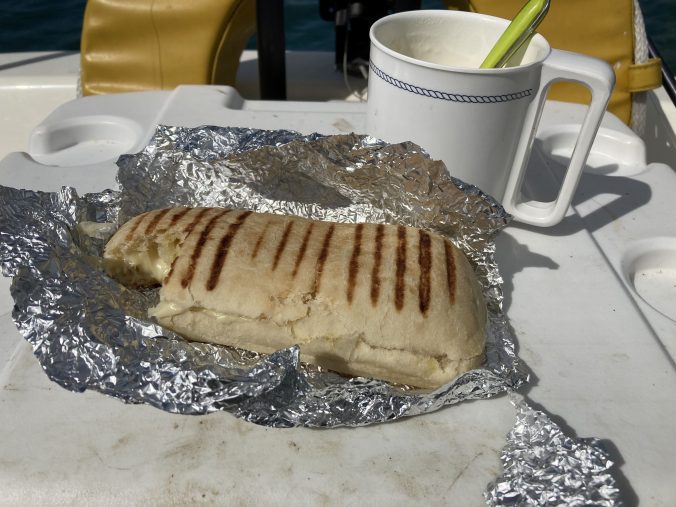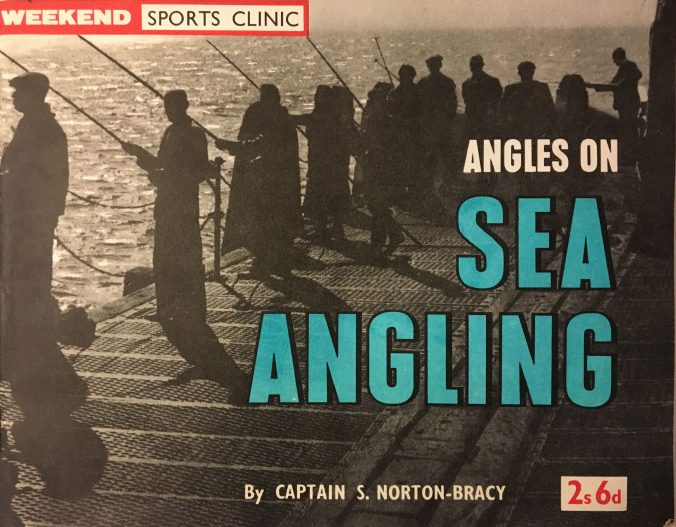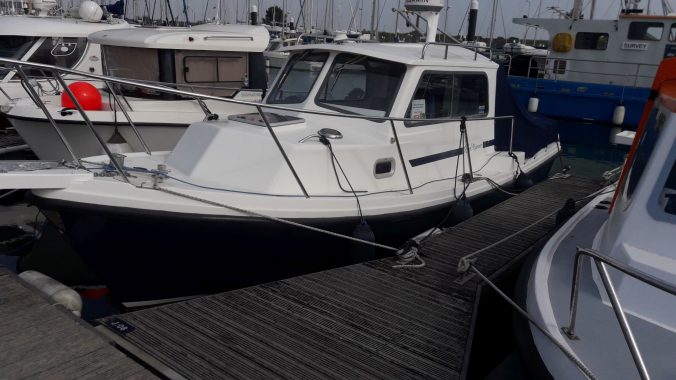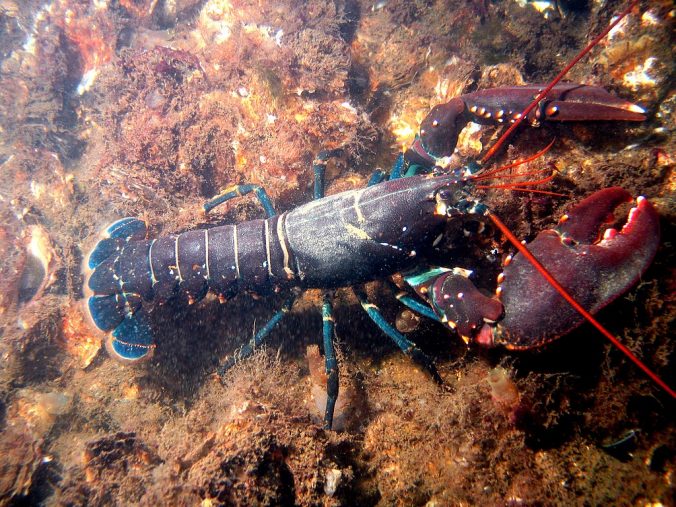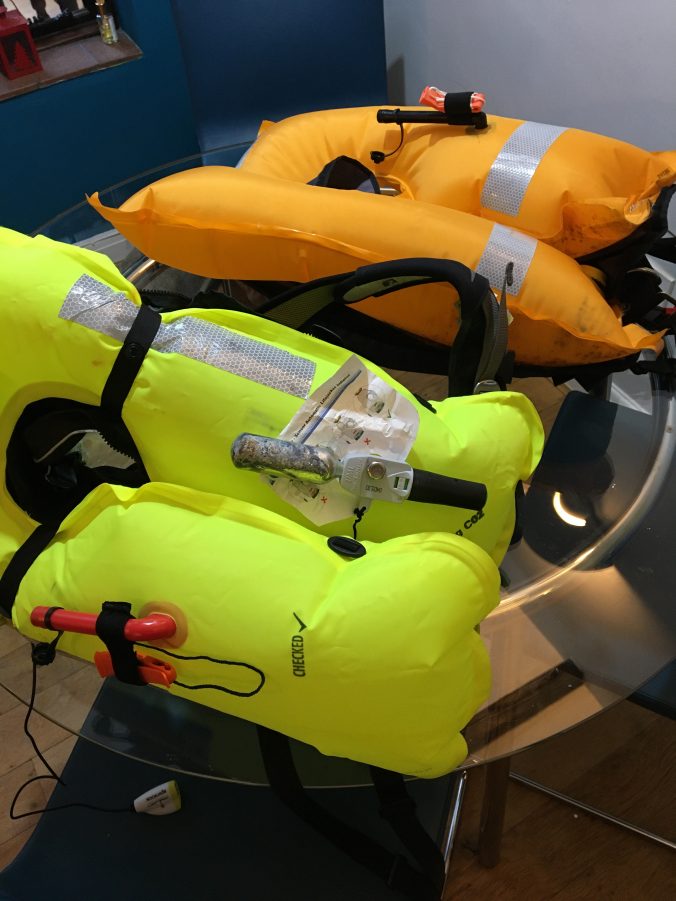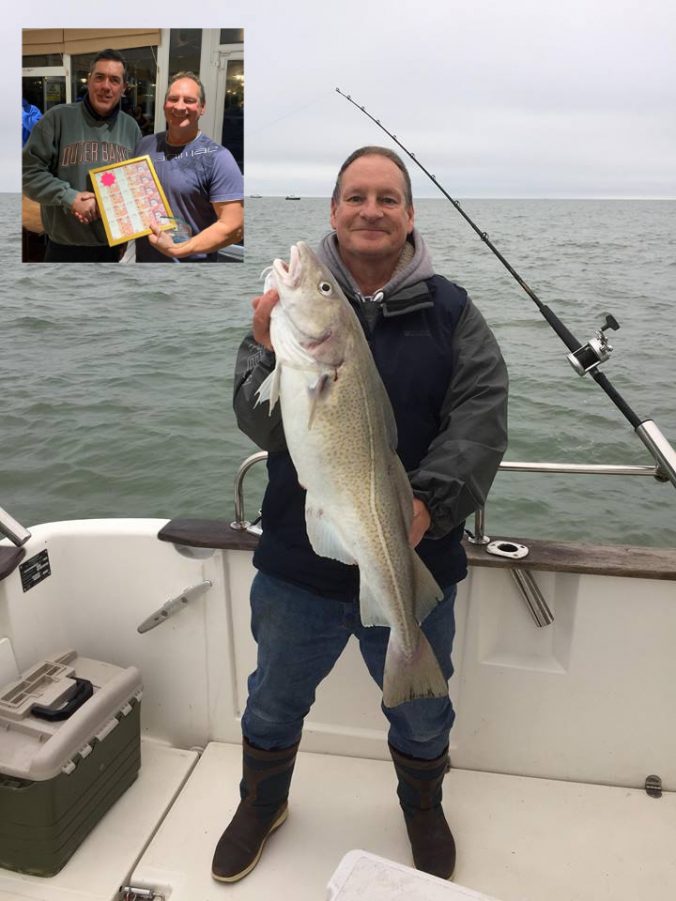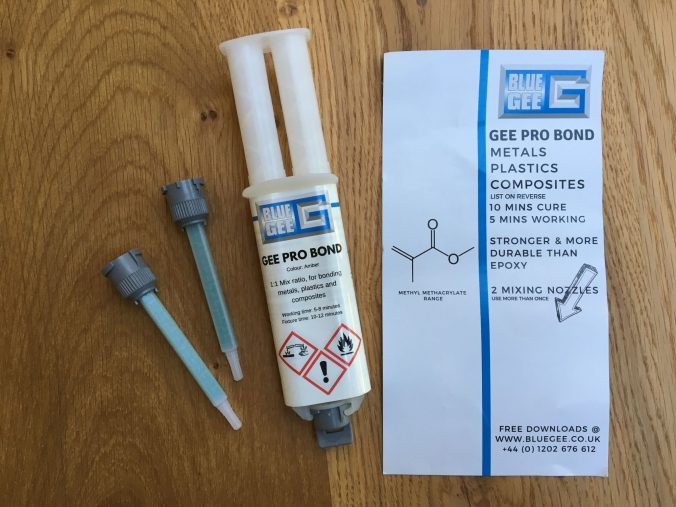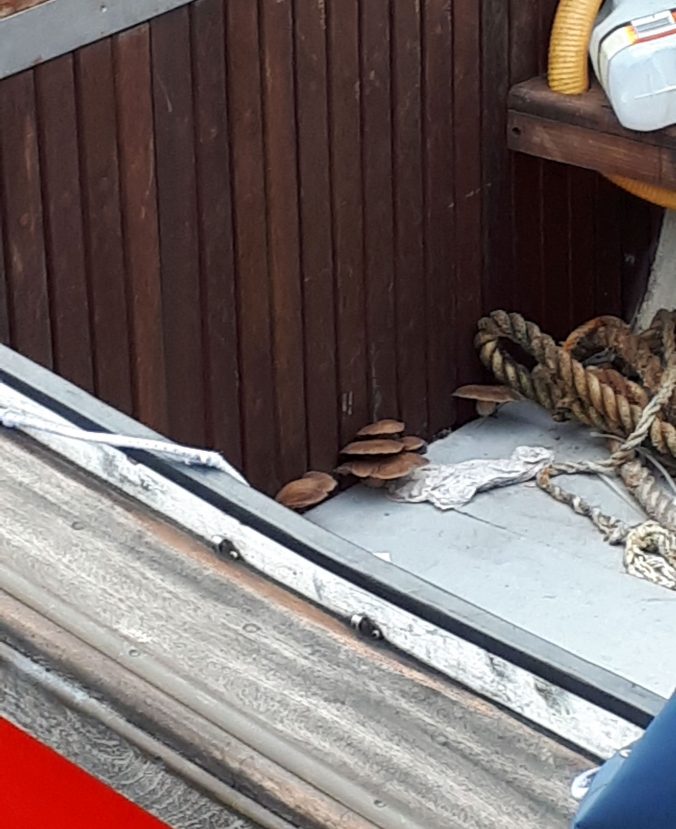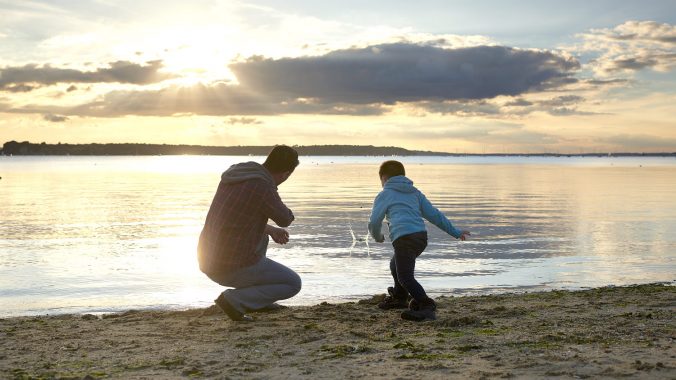I made a lot of friends and connections on World Sea Fishing when it was run by Mike Thrussell. After it was taken over (and in my opinion declined), Mike lay low for a bit but now he is back with a new Sea Fishing Forum. Pop over, sign up and join in!
Category: Article (Page 5 of 10)
Do you ever fancy a toasted sandwich, pannini or stuffie on board but you only have a one-burner stove and a kettle? Here is a way of bringing joy to a cold fishing day. Firstly, make your pannini, sandwich or stuffie (stuffed bap or roll) using heatable ingredients and preferably with cheese to bind it all together. Ham, bacon, cooked mushrooms, cheese, tomato, onion, cooked chicken, pesto, cooked meatballs/leftover burgers, sundried tomatoes are all ingredients you can experiment with. Now individually wrap the pannini/sandwich/stuffie tightly in strong aluminium foil. Go fishing. When hunger strikes, fire up your gas ring and take out a dry fring pan. Place your foil parcels in the pan and put on the heat. Turn them every two minutes for six to eight minutes. Heat gently or you could end up setting them on fire. If your turning and heat application are right, when you open the parcel you will find a hot pannini oozing with melted filling. If not, wrap it up again and take another couple of turns. The secret is to heat low and slow enough that it melts through to the centre, and hot enough that the top and bottom are crispy.
Steve Andrews came across this old gem by a Captain S. Norton-Bracy (you could discover new continents with a name like that). He kindly allowed me to scan it so you could take a trip back in time. Not all was good in those days – gaffing shark and conger for example. Milbro rods too, remember them? Tunny (tuna) of immense size were caught from Scarborough. Will they return? Enjoy a trip back to 1963 with this scanned copy.
Many of us were planning to use our boats this Spring, then suddenly we were prevented from getting to them even to shut them down properly. You may be worried that the prolonged idleness has harmed the engine, or you could cause harm by starting it without any further checks.
This week I attended an excellent webinar from Premier Marinas where Jonathan Parker of Parker Marine Services described what to do to minimise any engine damage when starting for the first time after lockdown. Here’s what he shared.
I won’t go into detail on the usual daily pre-start checks, obviously you would do these anyway:
- Check engine oil level
- Check gear oil level and colour (milky means water has got in)
- Check engine coolant level
- Check power steering reservoir if fitted.
- Check belt tensions
- Turn battery switches on
- Open seacocks
- Check bilge for unusual levels of water or signs of engine fluid leaking
- Check raw water strainer for debris
Pay particular attention to the raw water filter if fitted, because if your boat is in the water unused for a long period, marine creatures can climb into the filter and start living there.
The following are additional checks advised by Jonathan.
- Check for debris in the water or around your propeller
- Check your fuel filler cap and seal – was it on tight and could water have entered? If so check for water in the tank and fuel filter.
- Check the fuel filter bowl for water.
- If an outboard or outdrive leg has been left in the water, raise the leg and scrub weeds off the water inlet area.
- If you have a raw water strainer above the waterline, take the cap off and fill it with water so the feed to the impeller is primed. Refiot the cap securely
- Prime your fuel pump by pumping the lift pump about 20 times on a diesel engine, or squeeze the fuel line primer bulb on an outboard.
- Turn the engine over without starting it.
On a diesel engine you can do this by holding the Stop button or the decompression lever down while you crank the engine. This operates the oil pump and puts some oil in the bearings before loading them with a running engine.
Now you are ready to start the engine. Again, there are some standard checks you would always do after the engine starts:
- Oil pressure and charging warning lights and buzzer stop after a few seconds
- Ammeter/voltmeter show the alternator is charging – 13.5 to 14.5 volts
Raise the speed to 1200rpm in neutral. This helps the impeller draw water in. Now for some extra checks.
- Is cooling water circulating?
On an outboard you can see a water tell-tale jet. With a raw water strainer fitted you can see the water flow. On an enclosed system like an outdrive, feel the impeller housing – it should feel distinctly colder than the surrounding engine as water flows through. The same with the exhaust elbow. If it is difficult to reach you can use an infrared thermometer.
- Turn the steering lock to lock both directions to ensure it is free.
Ensure the boat is tied up securely with extra spring lines to secure bollards.
- Put the engine in gear at idle speed. This adds load, and gets the gearbox and propeller moving in their bearings and seals.
- Put the engine in gear in reverse at idle speed.
- Check for unusual noises or vibration
Run the engine in gear for 30 minutes or at idle for 45 minutes to bring it up to working temperature.
- Check that there is no overheating
- Check for leaks
- Check battery condition – no bulging, heat or sulphurous smell
If no problems are evident and you are allowed out, you can proceed. If you discover any problems, at least you are still at your berth and not drifting down the Langstone Run towards the pier (my personal nightmare).
If you are not allowed out, you need to shut the boat down as if you may be leaving it for some time.
- Fill tanks if possible
- Seacocks shut
- Battery switches off
- Fuel filler cap tight
- Doors, windows and hatches shut
- Vents open, if fitted
- Covers secure
- Fenders secure
- Mooring warps secure and not chafed
- Lock doors
- Remove perishable food and rubbish so you don’t attract rats
- Remember to take your phone home!
Let’s hope we are allowed out soon and can get back to enjoying our boating. The guidelines above are useful for starting your engine or running up your engine for any prolonged period without use, whatever the reason. Anglers are used to having a boat tied up for weeks on end due to bad weather – this now gives us a good excuse to spend time on your boats even if you can’t go fishing!
Cefas have launched a campaign to raise awareness of the threat to our lobsters from the non-native species of lobster, the American lobster. This Defra-funded initiative encourages fishers and others to “retain and report” any American lobsters that they capture, to measure and reduce impacts they are having in our marine environment.
(see identification chart below)
American lobsters have been imported to the UK since the late 1950s for consumption in restaurants and homes. American lobsters tend to grow to larger sizes than European lobster, have a larger dietary range, are more tolerant of different habitats, are more aggressive and produce more eggs than European lobsters. This means they are at a competitive advantage over the native species. American lobsters might also carry the bacterial disease, Gaffkaemia, or Epizootic Shell Disease. Transferring these diseases to native stocks could result in major economic losses to fishers. There is also a risk of American lobsters bringing other non-native species to our waters, such as barnacles and other small invertebrates which have attached themselves to the lobster.
The campaign aims to engage with lobster fishers explaining the legal position, how to identify an American lobster, the risks posed by the animals and the importance of retaining and reporting them to their local fisheries officers at the Inshore Fisheries and Conservation Authority (IFCA) or Marine Management Organisation (MMO). Knowingly releasing a non-native species to the wild is an offence under the Wildlife and Countryside Act, including returning one to the sea at point of capture.
The project lead at Cefas, Debbie Murphy, said “This a great opportunity for us to work with industry to gain information about whether these animals are affecting their fishery or not. By collecting this data Defra will be in a stronger position to make informed decisions regarding policy, and able to work to protect both the trade in American lobsters and wild stocks of European lobsters”.
Reports of American lobsters caught in our waters have historically been in low numbers and generally single animals, contributed to by escapes from holding tanks or releases by well-meaning members of the public or religious groups. The biggest contributor to American lobsters in English waters was a mass-release in June 2015 of 361 specimens off Brighton by Buddhist monks as part of their religious practice known as ‘fang sheng.’ In the months following this release, 136 American lobsters were removed from the sea in the surrounding area making up a large proportion of the 149 American lobsters reported from 2012 to 2018.
Almost 5 years on from the mass release and with less than half of the American lobsters having been reported as recaptured, Defra are keen to know what impact the animals may have had.
Posters and leaflets designed to help fishers understand the key features commonly associated with American lobster compared to European lobster, along with contact details to report suspected American lobsters have been produced by Cefas and are available on the GB Non-Native Species Secretariat website. Similar campaigns are planned in Scotland, Northern Ireland and Wales in 2020.

If you have lots of money you can send all your lifejackets away to be checked and serviced. Or, if like me you don’t have lots of money you can do a check yourself. It is surprising how quickly time passes, and lifejackets should be checked annually. I make a point of doing the checks between Christmas and New Year when I have a bit more time on my hands and I’m usually at home instead of fishing. That way I remember to do the checks every 12 months!
This year the checks were a reminder why they are important, because they showed up a couple of potentially serious problems. It may be a cliche but lifejackets are there to save your life and if they don’t work when they are needed, then you can drown – simple as that. So it’s worth a few minutes doing these simple checks.
Step 1. Visually check the externals of the lifejacket for wear, tears, fraying, harness attachments etc. If there is damage then repair is probably out of our capability so it is best to send them away for servicing. If all good, then carry on.
Step 2. Unwrap the lifejacket, usually there is a velcro or zip fastener. Use the top-up pipe to inflate the lifejacket to a firm consistency. Leave the lifejacket blown up for 24 hours. Meanwhile, do Steps 3 to 5.
Step 3. Check the condition of the cylinder, if you can see it. If it is corroded, replace it – like mine below.
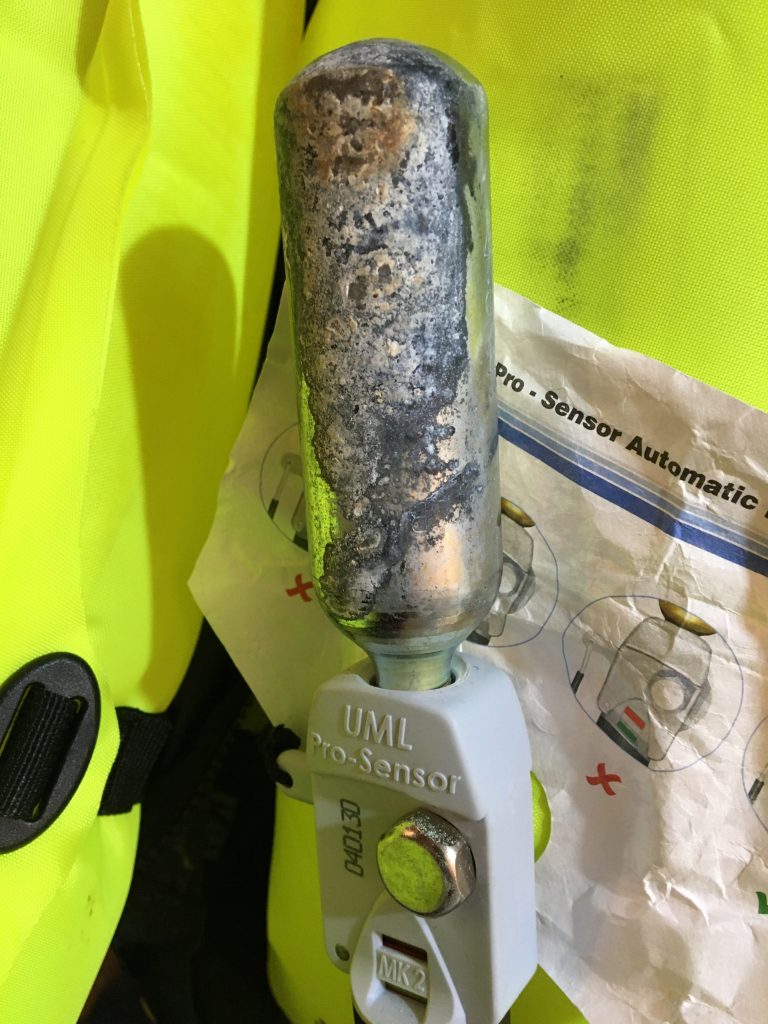
Step 4. Check any expiry dates or indicators on the automatic firing mechanism if fitted. On the Spinlock 5D above there is a Replace-By date on the firing mechanism, and coloured indicators on the body. My Crewfit lifejacket below has a Hammar mechanism. All good in this case.
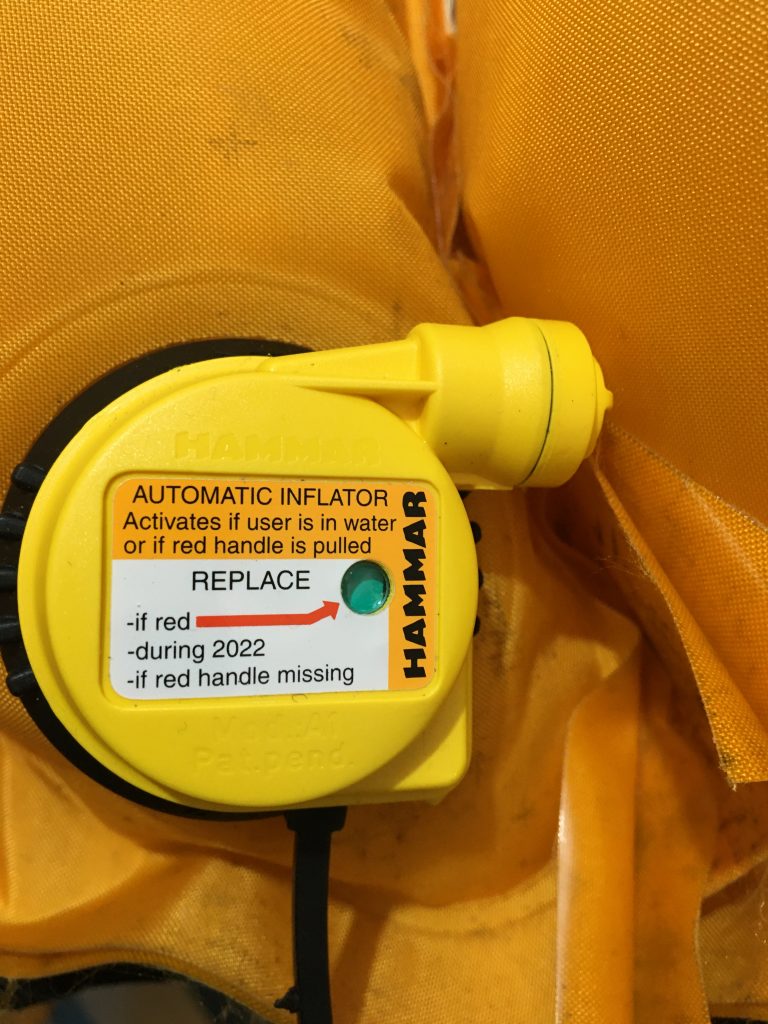
Step 5. Check any other features such as spray hood and light. This was another fault on my lifejacket – the light wasn’t working. It is a sealed unit so it has to be replaced.
Step 6. After 24 hours, check that the lifejacket is still inflated and as firm as it was when first inflated. If so, all is good. If not, you have a leak. Check the seating and O ring of the firing mechanism, it could be that. If it is, replace the O ring or tighten up the mounting and leave for another 24 hours to check. If that is not the cause, the lifejacket needs to go away for professional servicing.
When you have completed all the checks and replaced anything that needs replacing, your lifejacket can be repacked and put back in use for another 12 months, ready to save a life.
(pictured – previous winner Tim Andrews )
The 3rd Open Boat Cod Competition will be held on 17th November from Southsea Marina (reserve dates will be 24th November, 1st, 8th, 15th 22nd December)
Entry Fee £10. Sign in at the Marina Office.
Fishing from 08:00 to 16:00. Weigh-In by 17:30. Presentation in the Marina Bar at 18:00
First Prize £500 – heaviest cod
Second prize and prize table to be announced.
Other prizes:
Ladies Prize £50
Junior (under 16) prize £50
Heaviest whiting if there are not enough cod to cover the prize list.
For further details please contact Steve Kelly on 07790 584698 or stevek@premiermarinas.com
For information about arriving at Southsea Marina from the sea – follow this link
Here is Dick Prosser – winner of the first Open Boat Cod Competion held in January 2018
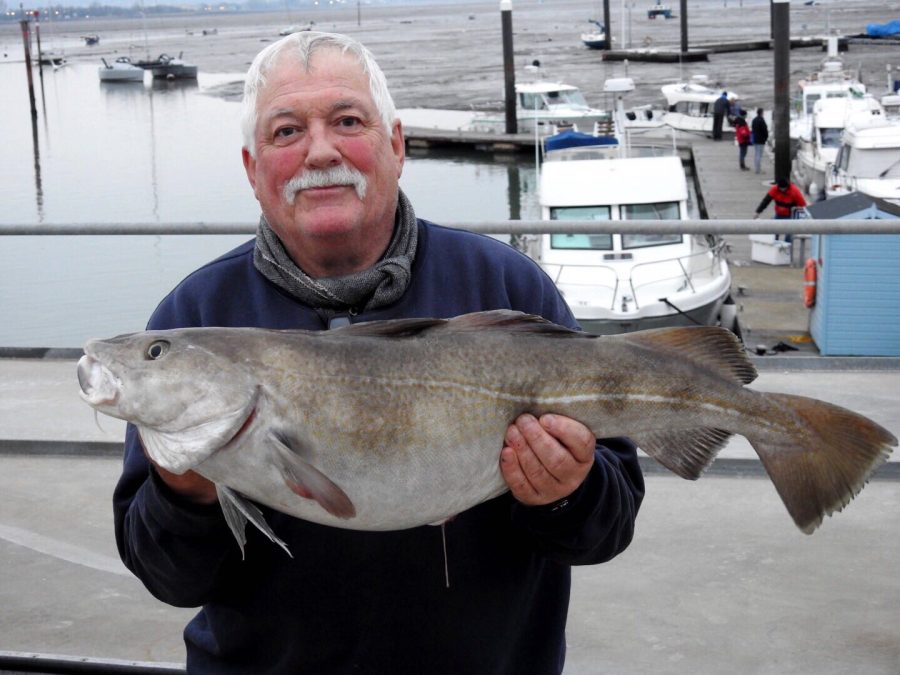
You may know Blue Gee from their GRP and Carbon boatbuilding and repair products. They recently launched a new two-part adhesive called Gee Pro Bond and I obtained a review sample to evaluate.
Initially this looks a lot like an epoxy, but it isn’t. It comes in a 25ml pack which is a double-barrelled syringe and two mixer nozzles. The bond and hardener are mixed with a 1:1 ratio so you can mix from the tube, but the mixer nozzle makes it a whole lot easier if you are bonding a larger area. You only get two nozzles, and they look well made so I expect supplying more would make the pack more expensive.
The best feature (apart from the bonding) is the cure time. It has a five-minute work time so you have to move fast, but it cures in 10 minutes. This makes it very useful when you need to get something fixed and can’t afford to hang around for the longer cure times of epoxy adhesives.
Most metals can be bonded without any pre-treatment. You can bond plastics, ABS, acrylics, vinyl, PVC, polycarbonates, composites, epoxy laminates, GRP polyester / vinyl ester and gelcoats. It is not suitable for polyolefins, thermoplastic polyesters, fluorocarbon plastics and other low surface energy plastics as they are generally not bondable with anything. It is also not good for wood unless the wood has already had an epoxy coating.
I have often thought that we don’t use specialist adhesives enough in boatbuilding and maintenance. One common challenge is fixing fittings to a GRP skin – either an internal moulding or the hull itself. With this adhesive you can bond a countersunk bolt head to the GRP surface leaving the thread sticking up looking like a stud, and simply bolt the fitting to the thread. I tested this idea with an extending arm to hold my iPad. I didn’t want to drill through the bulkhead so I simply bonded a bolt to the GRP. A single bolt was able to support the iPad, on an arm extended about 200mm is some choppy sea conditions where the strength of the bond was severely tested. It came through rock solid.
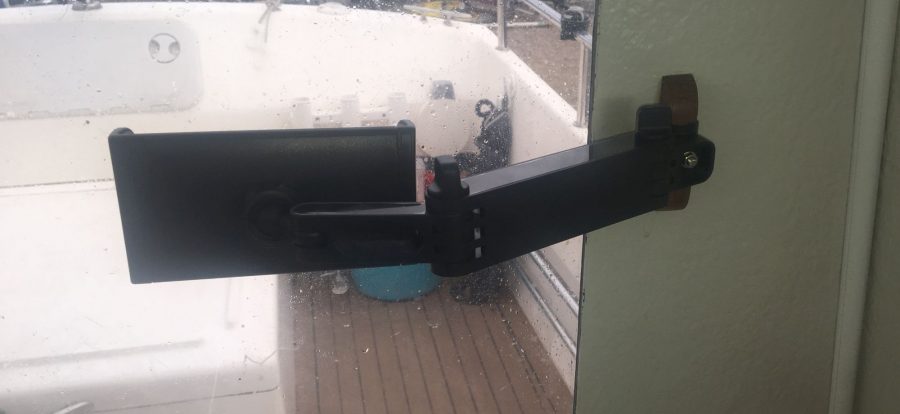
I also made up some test pieces for destruction testing. As expected, wood on wood and wood on GRP held, but without strength. It would probably be OK for cosmetic applications but not where strength is required. Much more impressive were the metal to GRP tests and plastic/GRP to GRP – these stood up to considerable force and the plastic to GRP bond never failed – the GRP itself delaminated before the bond broke.
In conclusion, this is a useful adhesive for specific, high strength quick cure applications.
This is what happens if continued bad weather keeps boats tied up on the pontoon instead of getting a good salty soaking out fishing. Seen in Southsea Marina recently, mushrooms sprouting from the cockpit! We need to get out there, people…
If you have lost a loved one or friend who loved the sea, there is a very fitting way of setting up a website to collect and share memories and photographs. The RNLI have a free-to-use tribute portal called “Forever By The Sea”. All you need to do is visit this RNLI page and ask via their page for a tribute to be set up. There is no obligation to collect funds but people will probably want to donate something anyway. It is all in a very good cause and there is something lasting to share, visit and revisit.
